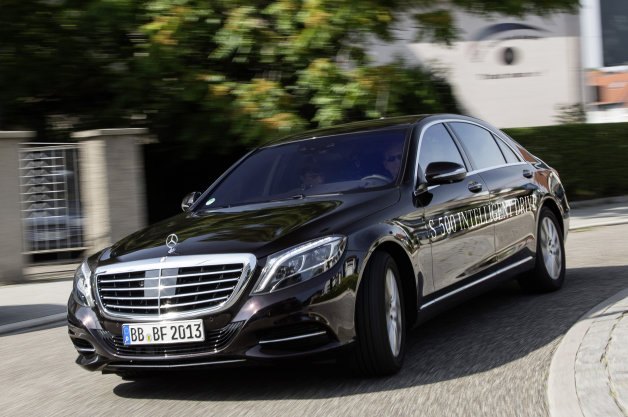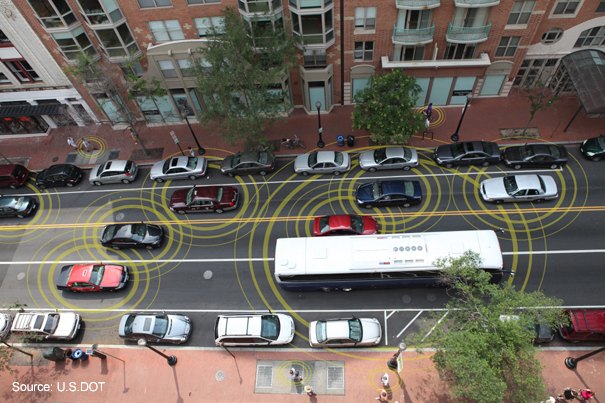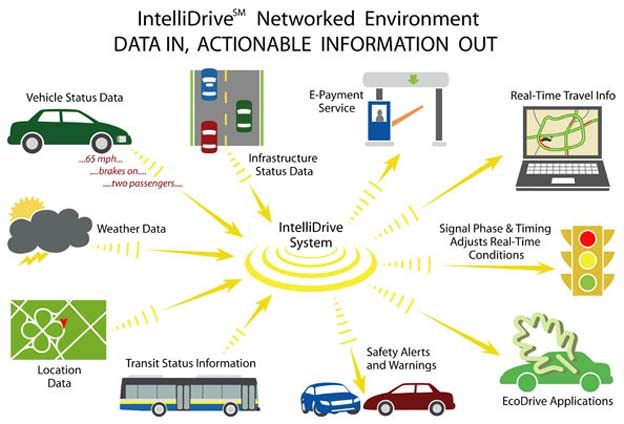#v2i
Driving Dystopia: Companies Are Getting Serious About Vehicle-to-Infrastructure Connectivity
Before connected vehicles had become ubiquitous, numerous companies suggested that they would be networked into roadway infrastructure to improve safety and decrease traffic congestion. The concept even became a keystone issue for lobbyists trying to convince lawmakers to create regulations favorable to autonomous cars.
But it never manifested due to just how ambitious the overarching concept happened to be. The relevant technologies were still in their infancy and would require years of collaboration between multiple industries and various government agencies before anything got off the ground. However, things are reportedly starting to change. Pilot programs are being implemented on public streets, companies are working on the necessary hardware, and the U.S. government is asking for more with cash in hand.
Attention Automakers: Ajit Pai is Not Your Friend
Two decades ago, the Federal Communications Commission decided to allocate a portion of the radio frequency spectrum for Dedicated Short Range Communications ( DSRC). The plan was to utilize that slice of the airwaves for ultra-modern automotive technologies relating to vehicle-to-vehicle and/or vehicle-to-infrastructure communications. Unfortunately, there hasn’t been a whole lot of activity on those channels.
The automotive industry was concerned it might need dedicated frequencies for use in autonomous-vehicle applications or some, yet unknown, technological advancement. But cable companies are annoyed that it’s being “wasted” and have started to antsy. They’ve asked the FCC to revoke carmakers’ exclusive rights to the frequencies and reallocate the majority of the 5.9-GHz band to the Wi-Fi systems that currently carry internet traffic for cable customers.
Hoping to encourage the commission to see things its way, Ford took FCC Chairman Ajit Pai out for a ride in an extra-special F-150 to plead its case. However, I feel like I can already predict whose side he’s going to take on this issue… and it isn’t going to be the automakers’.
Right of the Dial: FCC May Open Automotive Safety Radio Frequency for Telecom Use
The Federal Communications Commission has decided to review how the radio spectrum intended for wireless communications should be divided. While a seemingly normal part of its duties, the reassessment could open up a part of the spectrum that was previously reserved for automotive applications. The super-high 5.9 GHz frequency reserved for cars was deemed important because it would help enable low-power connectivity in remote and high-density areas, allowing for vehicles to more reliably transmit information between each other and the infrastructure. This was framed by the interested parties as essential for helping to develop safe, autonomous driving systems but it could likely also work to aid any data-based services they offer in the future.
Meanwhile, cable companies, the telecom industry, and internet service providers (ISPs) don’t think it’s fair that automakers are getting their own slice of bandwidth when they’re not even using it yet. Carmakers have been working on vehicle-to-vehicle (V2V), vehicle-to-infrastructure, and dedicated short-range communication (DSRC) for years without much in the way of consumer applications.
Toyota Confirms 'Talking' Cars for 2021
Toyota wants to be a leader in the connected vehicle field and is encouraging all automakers to utilize dedicated short-range communications (DSRC) on all of vehicles sold in the United States — especially after it has already decided to do so with its own fleet. The brand has said it will be building talking cars by 2021. But they won’t talk in the same sense as a 1987 Chrysler New Yorker constantly reminding you that the door is ajar in a Speak & Spell voice, nor will they communicate with you like modern-day vehicles equipped with Amazon’s spyware intelligent personal-assistant service.
Instead, they’ll be talking to each other via a dedicated channel for vehicle-to-vehicle (V2V) communications. Toyota and Lexus intend to start equipping models with the technology in 2020, hoping to have it on most models by the following year. But it wasn’t the first to pitch the idea. The Federal Communications Commission allocated specific bandwidths for car chatter in 2017 and Cadillac has been talking about V2V for years.
Mercedes Turns Former Naval Base Into Autonomous Testing Ground
With the highway mostly conquered, autonomous vehicles now must navigate the cities through which they would otherwise pass by, a challenge unto itself with few proving grounds available for research.
Mercedes-Benz, however, happened upon a solution not too far from its R&D base in Sunnyvale, Calif.
BMW, Baidu Team Up For Automated Driving Trials In China
BMW has teamed up with the Google of China, Baidu, to begin work on automated driving trials in Beijing and Shanghai.
Real-Time Data May Lead To Greater Automated Law Enforcement
Presently, V2V (vehicle to vehicle) and V2I (vehicle to infrastructure) technologies are meant to allow a vehicle so-equipped to better navigate its surroundings, and to exchange data with other vehicles like it. If law enforcement has its way, however, the red and blue lights in the rearview mirror could soon give way to the electric eye of automated enforcement.
Real-Time Mapping Key To Autonomous Travel
Like famed explorers Lewis & Clark, Amerigo Vespucci and Dora, autonomous vehicles will be at the mercy of whatever maps are available as they navigate the uncharted technological waters of the United States and beyond.
Delphi Confirmed ITS Technology Supplier For Cadillac
Earlier this week, General Motors CEO Mary Barra announced that Cadillac would be the first of her company’s brands to receive V2V and V2I technologies, which would be introduced in the 2017 CTS and the unnamed F-segment flagship recently green-lighted.
Today, we know who will be supplying those technologies: supplier Delphi.
ITS Technologies May Provide Better Travel In Exchange For Personal Data
As V2V and V2I technologies slowly make their way through the testing phase and into the mainstream, there could come a day when your commute will go more smoothly than it stands at the moment. That convenience, however, could come at the price of your personal information.
Future Of Industry, Mobility To Be Shaped At Detroit Tech Conference
Part of the automobile’s future may be linked to concerns of safety, fuel efficiency and the environment, but connected- and autonomous-vehicle technologies, among other disruptors, look to flip the table on the century-old game as the 21st World Congress on Intelligent Transport Systems gets underway this week in Detroit.
Toyota Focused More On Safety Over Vehicle Autonomy
Though Google was more than happy to turn a few Prii into autonomous test beds, Toyota doesn’t see much of a future for autonomous vehicles from the tech giant or Toyota’s competitors.



























Recent Comments